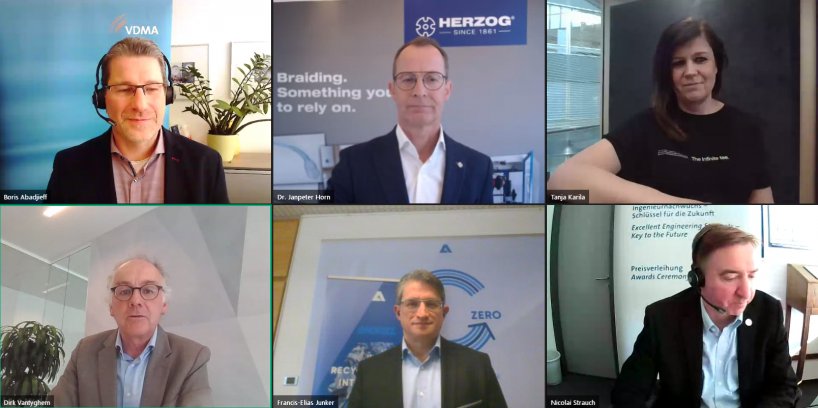
Michelman leads webinar on fibre sizing
New regulations to be paired with an increased focus on industrial resilience.

8th March 2023
Innovation in Textiles
|
Germany
The way the textile industry is organised is changing rapidly and the European Union’s Strategy for Sustainable and Circular Textiles, published in March 2022, is not just a vision, but will be translated into legislation introducing new rules, restrictions, regulations and standards.
This was the central message of Dirk Vantyghem, director of Euratex, the Brussels-based textiles and clothing association, speaking during a webinar organised by Germany’s VDMA Textile Machinery and broadcast on February 28th.
The EC has become more concerned about competetiveness than in the past, which is partly due to the Covid-19 pandemic when we discovered we were short of all kinds of things, not least PPE
Way2ITMA
The webinar was the first in the Way2ITMA series under the heading Transforming the World of Textiles – efficient, digital and circular. It was introduced by Janpeter Horn, the new chairman of VDMA Textile Machinery and MD of braiding machinery specialist Herzog, who said the EU’s strategy was of concern to everyone in the industry, both as manufacturers and consumers.
“We as machinery builders position ourselves as enablers and want to be part of the solution to this ambitious project,” he said.
Euratex represents around 143,000 separate companies within Europe, employing 1.3 million people with an annual turnover of €147 billion and exports from the EU worth €58 billion. It is active in representing the industry with legislators in Brussels.
“Given the ambition of its Green Deal, it is understandable why the European Commission (EC) has focused on the textile industry, but in addition to ensuring its sustainable future, there is also an increased focus on industrial resilience,” Vantyghem said. “The EC has become more concerned about competetiveness than in the past, which is partly due to the Covid-19 pandemic when we discovered we were short of all kinds of things, not least PPE. It has subsequently activated a strategy to reduce its outside dependency across 12 sectors and textiles is one of them.
“From a global perspective, relations are changing from a very open free market with no questions asked to insisting we all comply with the same rules to create a level playing field. The approach is in favour of free trade but will also insist on fair trade, especially with textiles being the most globalised of industries.”
Regulatory framework
The Strategy for Sustainable and Circular Textiles will introduce a new regulatory framework covering an eco design regulation (ESPR), product environmental footprint (PEF), extended producer responsibility (EPR), due dilligence and digital product passports.
It will also introduce measures to deal with microplastics and chemicals, overproduction and consumption, green claims and ecolabels and compulsory textile waste collection.
“Textiles will become a very regulated industry,” Vantyghem said. “A transition pathway is envisaged to help absorb all this new legislation and build resilience, involving market surveillance to ensure a level playing field and investment in innovation and skills.
“Euratex is not against this transition and we believe in its potential but we have to ensure this is a smart regulatory framework that is both realistic and enforceable. Most importantly, it has to be in a global context and cannot only apply to Europe, because otherwise its impact on the planet would be quite limited.”
Infinna
The VDMA webinar also featured presentations from Francis-Elias Junker, area sales manager for machinery builder Andritz Laroche, and from Tanja Karila, of Infinted Fiber Company, who are working together on the establishment of the previously-reported Infinna fibre site in Finland which is scheduled to become operational in 2026, with an annual capacity of 30,000 tons.
In outlining the Andritz technology options for recycling, Junker said that the huge challenge of post-consumer textile waste called for a vast scaling of capacity, starting with collection, and with automated sorting critical to defining quality for cutting, shredding and mechanical recycling back into either fibres for spinning or nonwovens. Chemical recycling options deal with the waste that is not of sufficient quality for either.
Coming next…
The next edition of the VDMA’s Way2ITMA series is scheduled for April 25, entitled Intelligent production and energy management for textile dyeing and finishing processes presented by the companies Brückner, Sedo Treepoint and Thies.
All webtalks and recordings, other videos and company statements are accessible via the VDMA Textile Machinery customer portal here.

Business intelligence for the fibre, textiles and apparel industries: technologies, innovations, markets, investments, trade policy, sourcing, strategy...
Find out more